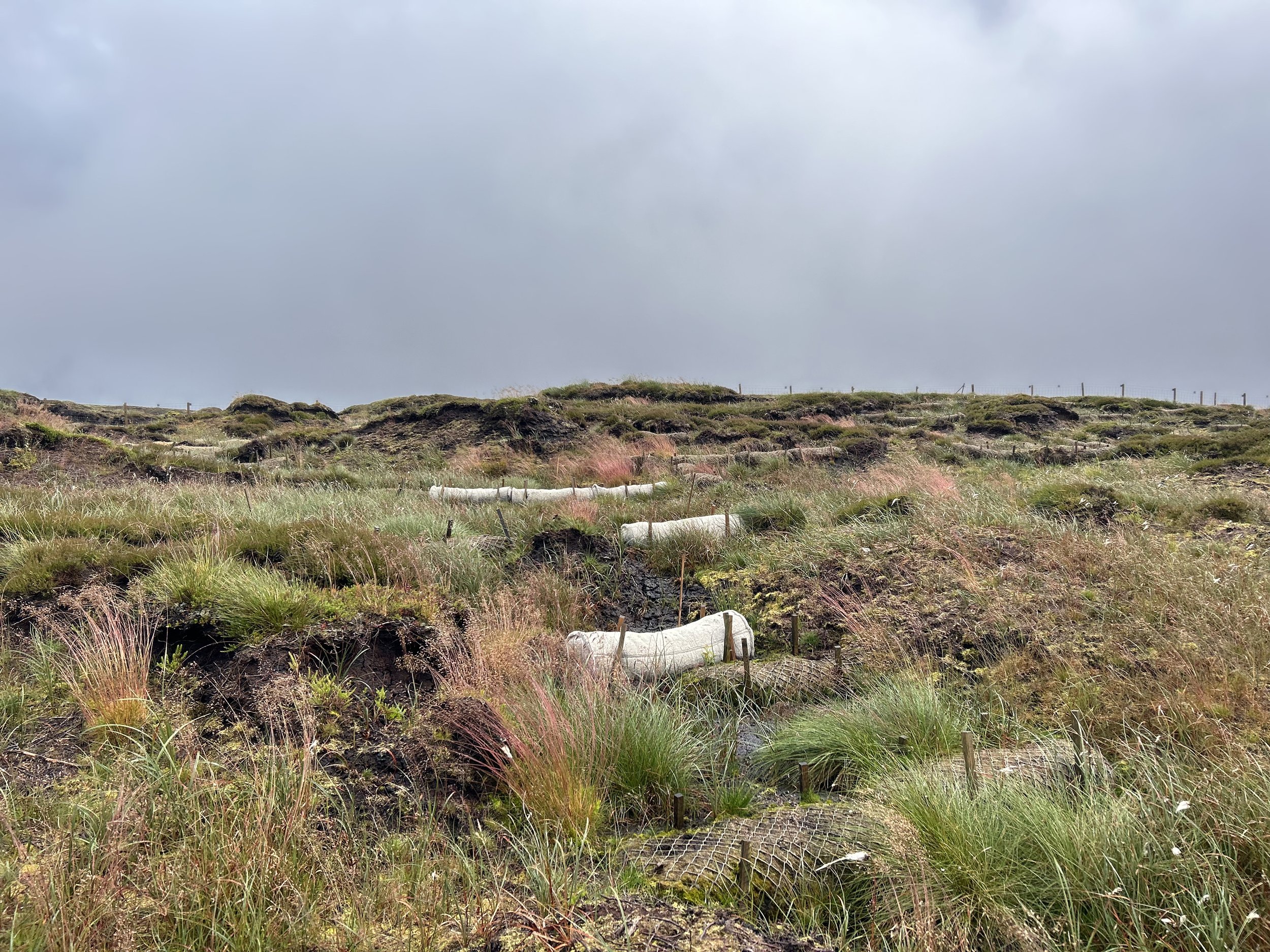
A partnership with Natural Dales Wool.
Working with nature.
How wool has become a tool for restoring landscapes, sequestering carbon, and preserving vital ecosystems.
The partnership between Natural Dales Wool and The Woolkeepers is tackling the way the UK restores peatlands by harnessing the natural properties of wool, this collaboration provides a holistic solution to one of the country’s most pressing environmental challenges. The partnership not only promotes environmental stewardship but also uplifts local farmers, ensuring market-leading prices and regional resilience around the breeds.
Peatlands are among the planet’s most effective carbon sinks, storing large amounts of carbon accumulated over thousands of years. Despite covering only 3% of the Earth’s surface, they hold nearly 30% of the world’s soil carbon. However, in the UK, over 80% of peatlands have been damaged due to historical drainage, overgrazing, peat extraction, and human activities. This degradation leads to carbon release, worsening climate change, reducing biodiversity, and increasing the risk of flooding through disrupted water retention. Restoring these ecosystems is critical to reverse these negative impacts.
When healthy, peatlands act as natural water regulators, reducing the risk of flooding by absorbing and slowly releasing water. They also provide habitats for rare plants, insects, and birds, such as sphagnum moss, curlews, and dragonflies. Without restoration, damaged peatlands turn from carbon sinks into carbon sources, accelerating global warming. Traditional restoration methods have relied on imported materials such as coconut coir logs. However, the Natural Dales Wool and Woolkeepers® partnership presents an encouraging alternative - using Swaledale wool from local farmers.
Elements of Peatland Restoration.
Water retention.
Peatlands act as natural water sponges, absorbing and slowly releasing water.
If the land has been drained (e.g., for agriculture or forestry), restoration must rewet the area by blocking ditches, raising the water table, and restoring natural flow patterns.
The success of restoration depends on the land's ability to retain water, preventing further degradation and carbon loss.
Soil structure.
Peatlands are composed of partially decomposed plant material, creating a fragile but carbon-rich soil.
If the land has been heavily compacted or degraded, it may struggle to support native vegetation like sphagnum moss, which is essential for peat formation.
Restoring the land’s structural integrity helps encourage the return of native plant life and prevents erosion.
Erosion control.
The landscape's slope affects water movement and erosion risk.
Peatland restoration projects must stabilise eroded areas, ensuring the land does not dry out or wash away during heavy rainfall.
If not managed properly, peat erosion can lead to loss of stored carbon and degraded habitat for wildlife
How wool logs help in peatland restoration
Wool logs are biodegradable erosion control tools made from natural sheep wool. They aid peatland restoration by addressing hydrology, soil structure, and vegetation regrowth,
-
Wool is highly absorbent, helping to slow water runoff and retain moisture in degraded peatlands. This promotes the return of sphagnum moss, which is crucial for rebuilding peat.
-
Wool logs act as barriers, trapping sediment and preventing peat from washing away. This helps restore the natural contours of the land, slowing water flow and encouraging native plant regrowth.
-
As wool logs decompose, they release nutrients that enrich the soil, promoting the establishment of native plants.
Unlike synthetic barriers, wool logs break down naturally, integrating into the ecosystem without pollution.
Naturally better.
Wool is a natural solution
Swaledale sheep, hardy and well-adapted to the UK’s uplands, produce wool that has historically struggled to find value in commercial markets. Through innovation, this wool is now being repurposed into peatland restoration materials that are biodegradable, highly absorbent, and entirely natural. Unlike coconut fibre, which must be transported across the globe, Swaledale wool is sourced within a 145-mile radius, significantly reducing the carbon footprint of restoration projects.
Using wool in peatland restoration aligns with nature’s own cycles. As the wool decomposes, it enriches the soil while maintaining its structure, slowing water runoff, and helping to establish new vegetation. The synergy between agriculture and conservation means that wool, a natural by-product of sheep farming, contributes to the health of landscapes rather than going to waste.
Regional supply chains.
Shared success.
Beyond the environmental benefits, this partnership strengthens local supply chains by ensuring that farmers receive fair prices for their wool. Historically, hill farmers have faced fluctuating and often unsustainable wool prices. By creating a steady demand for Swaledale wool in restoration projects, this initiative provides economic stability to these farmers while promoting environmental responsibility.
The success of this model is already inspiring wider adoption. Following a visit to Natural Dales Wool, the South West Peatland Partnership is now exploring similar applications for Devon mountain wools, extending the impact of this groundbreaking initiative. The collaboration demonstrates that by working with natural materials and regional resources, we can create a regenerative, circular economy that benefits people and the planet.





